Students Take Action Against Marine Debris by Embracing Zero Waste
By: Naomi Pollack and Alyssa Nally
July 2016
How can young people make a difference in the face of marine debris? This spring, students at ninety schools across the nation – from as far and wide as American Samoa, Hawaii, California, Michigan, Texas, Maryland, Massachusetts and the Virgin Islands -- came together to find out.
Between March 21st and April 22nd, these students took part in the fourth annual Students for Zero Waste Week 2016 campaign. Participating schools chose one of the five campaign weeks to focus on reducing land-based waste in attempt to protect the health of marine environments and animals.
Each school pledged to take the Zero Waste Week Challenge by setting week-long goals and designing unique activities to address the issue of marine debris. With this pledge, students set out to raise awareness on campus, at home, and in their communities of how anthropogenic debris is negatively affecting the health of our watersheds, national marine sanctuaries and the ocean.
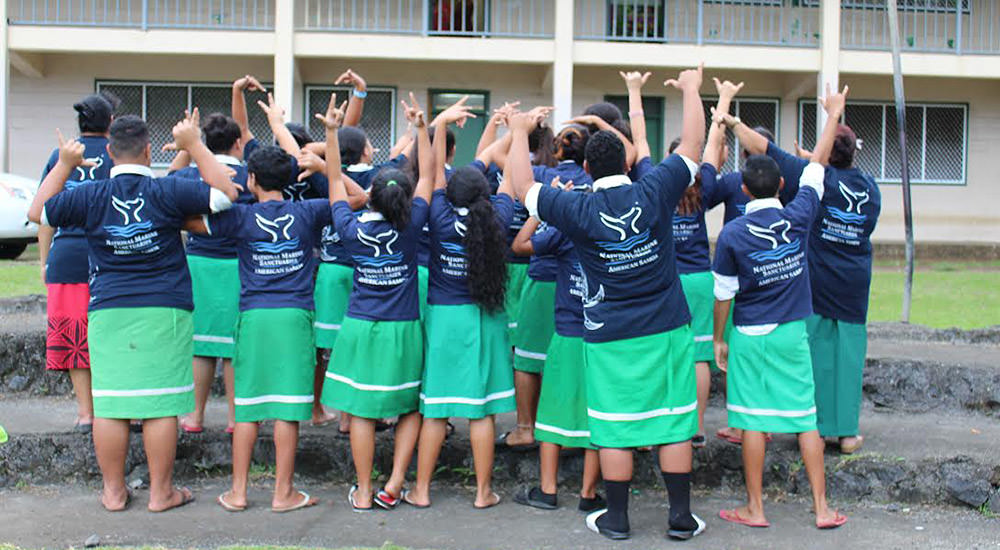
Students for Zero Waste Week was initiated in 2013 by eight Ocean Guardian Schools in and around the Carmel River Watershed on California's central coast. With organizational support from NOAA's Ocean Guardian School program, the campaign has grown in both size and scope, but continues to be student-focused. "This was completely student-driven, student-created and student-run," explained Alex Hofsteen, a teacher at the International School of Monterey in Seaside, California. "It was truly inspiring to see middle school students taking initiative, collaborating, and being caring, responsible members of the community without an adult. Watching them run with their ideas and leading the school – sending out emails to parents, doing student presentations in classrooms – was again feeling like a proud parent. It was really great to see students teaching students."
Students led by example in their efforts to reduce waste by opting to replace single-use items such as plastic bags, bottles, straws, foam trays and spork packs with more sustainable, reusable options. For example, in return for pledging not to use plastic sporks in the cafeteria, students at Cooper Academy in Fresno, California received reusable bamboo sporks. Black Diamond Middle School in Antioch, California gave away reusable bottles to 220 students who had made a commitment to reduce their use of single-use plastic bottles. In addition, schools also focused their energy on reducing their use of paper products, powering down electronics, ramping up recycling efforts, and establishing composting programs on campus.
At St. Andrews Day School in Edgewater, Maryland, fourth grade students made their own restaurant cards to hand out in the community to ask customers to consider not using plastic straws, explained teacher Lori Dixon. She added, "The artwork was fantastic. Each student in the entire elementary school was given a card to take to a restaurant. We made about 145 cards in all! That's a lot of restaurants in the community that gained awareness about reducing waste!"
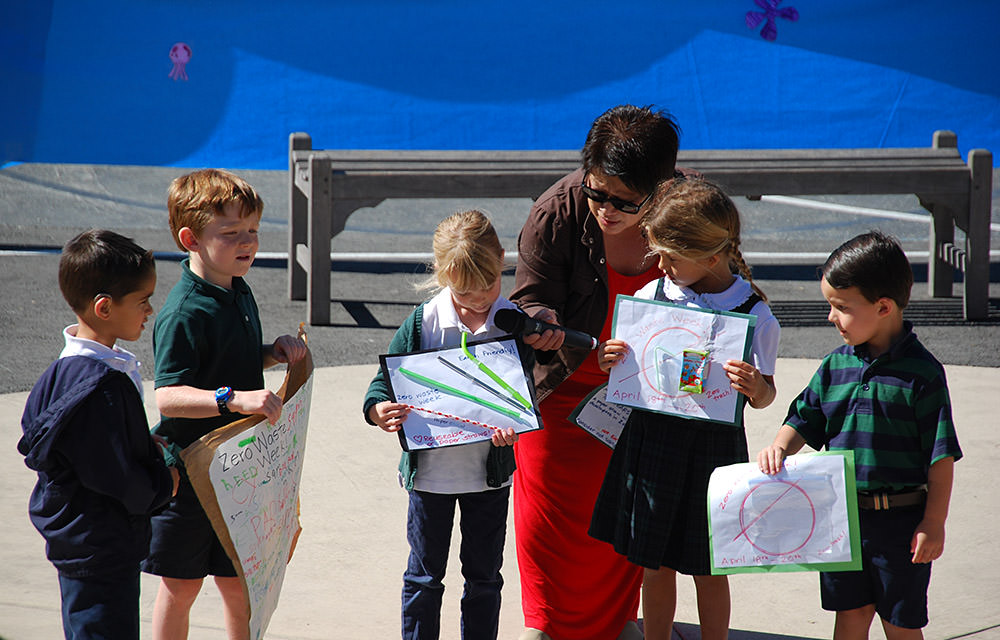
A number of schools conducted waste audits to measure the use of single-use items during their campaign week. Students tallied the number of a single-use items that were used before the start of Zero Waste Week and counted the same items again at the end of Zero Waste Week. Using their "before" and "end" numbers, the percentage change of each type of single-use item was calculated. The numbers clearly confirmed that the students had been successful in working towards zero waste!
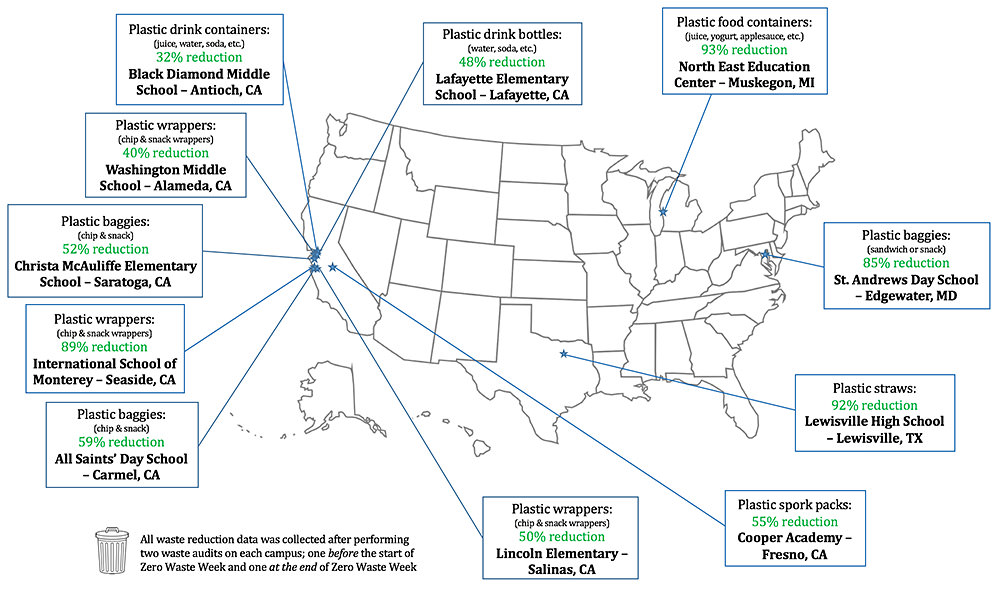
Many schools came up with their own creative ideas on how to collectively teach and celebrate the theme of zero waste this year. Students created mobiles from trash, assembled mosaics from bottle caps, constructed zero waste challenge boards, hosted waste reduction competitions, performed zero waste raps, recorded zero waste PSAs for morning announcements, sported their latest home-made fashions in custom "Trashion" shows, and more!
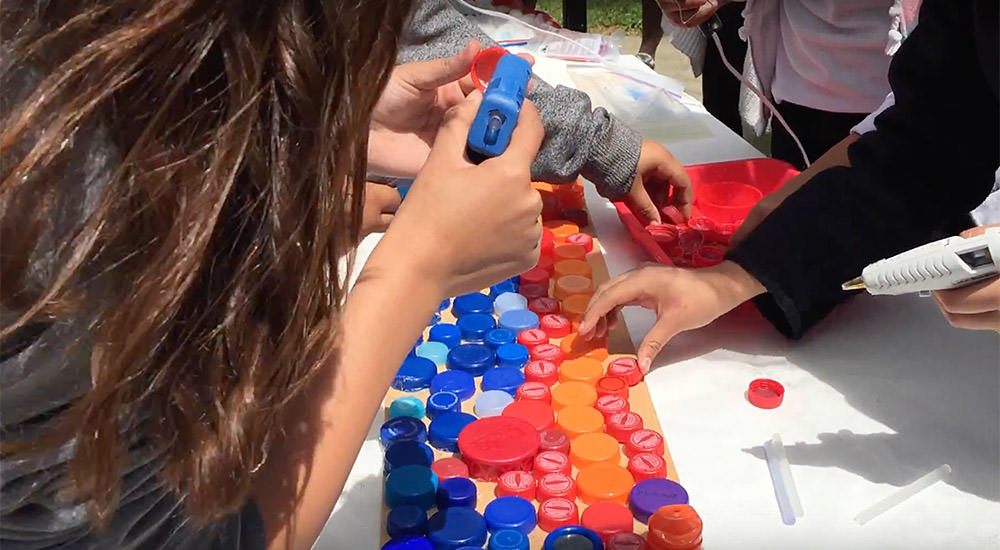
As they worked towards zero waste, students also had opportunities to come together to discuss future zero waste steps and changes they would like to see on their campuses, in their homes and in their own communities. "As a teacher, I'd say I'm most excited by the diversity of ideas, initiatives and authentic energy our school family puts behind Zero Waste Week," said Kevin Day of All Saints' Day School in Carmel, California. "This year's Zero Waste Week celebrated some of what we were already do -- as well as inspired us as a school family to continue moving forward. By the end of Zero Waste Week, our 'Zero Waste Challenge' board (which arose from our Zero Waste Week rap) was full of ideas for school-wide initiatives for the 2016-17 school year. No teacher had to assign students to post ideas there.They seemed pretty eager to weigh in with new ideas and initiatives for turning our 'Zero Waste Week' into more of a 'Zero Waste Way.'"
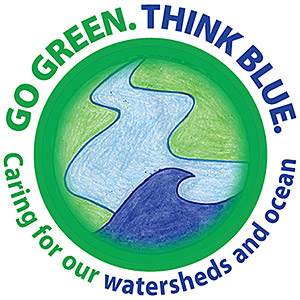
Whether they were presenting to their city councils, setting up a school compost system or saying "no thank you" to plastic straws, students spent their Zero Waste Week becoming more aware about the discernible connection between land and sea. As their awareness grew, they gained insight into their individual and collective impact on marine ecosystems, and in turn, gave real meaning to the Zero Waste Week motto: GO GREEN. THINK BLUE!
Interested in participating in next year's Students for Zero Waste Week campaign? Visit the Students for Zero Waste Week page.

